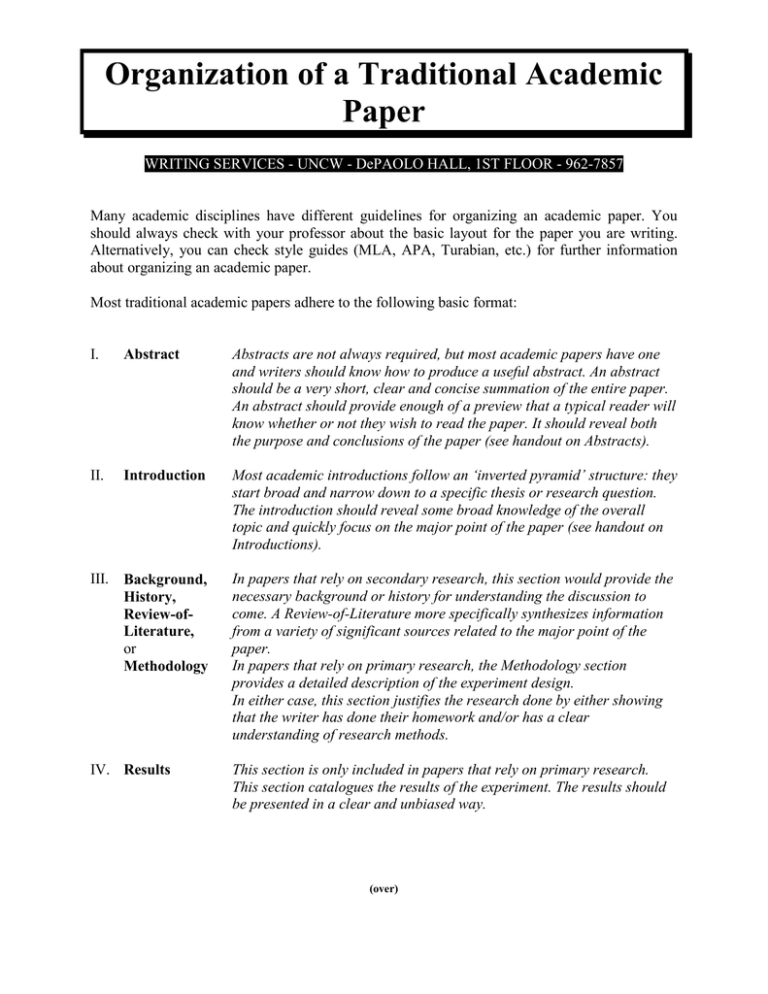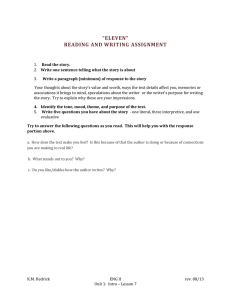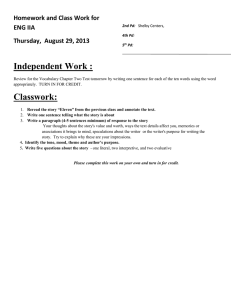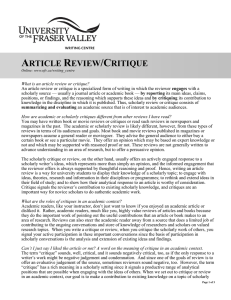Organization of a Traditional Academic Paper
advertisement

Organization of a Traditional Academic Paper WRITING SERVICES - UNCW - DePAOLO HALL, 1ST FLOOR - 962-7857 Many academic disciplines have different guidelines for organizing an academic paper. You should always check with your professor about the basic layout for the paper you are writing. Alternatively, you can check style guides (MLA, APA, Turabian, etc.) for further information about organizing an academic paper. Most traditional academic papers adhere to the following basic format: I. Abstract Abstracts are not always required, but most academic papers have one and writers should know how to produce a useful abstract. An abstract should be a very short, clear and concise summation of the entire paper. An abstract should provide enough of a preview that a typical reader will know whether or not they wish to read the paper. It should reveal both the purpose and conclusions of the paper (see handout on Abstracts). II. Introduction Most academic introductions follow an ‘inverted pyramid’ structure: they start broad and narrow down to a specific thesis or research question. The introduction should reveal some broad knowledge of the overall topic and quickly focus on the major point of the paper (see handout on Introductions). III. Background, History, Review-ofLiterature, or Methodology In papers that rely on secondary research, this section would provide the necessary background or history for understanding the discussion to come. A Review-of-Literature more specifically synthesizes information from a variety of significant sources related to the major point of the paper. In papers that rely on primary research, the Methodology section provides a detailed description of the experiment design. In either case, this section justifies the research done by either showing that the writer has done their homework and/or has a clear understanding of research methods. IV. Results This section is only included in papers that rely on primary research. This section catalogues the results of the experiment. The results should be presented in a clear and unbiased way. (over) V. Argument, Critique, or Discussion This section is the “heart” of the paper – where the writer finally makes the major point or claim the previous sections have led the reader to expect. This section will usually be the lengthiest section of the paper and should include a thorough and well-supported argument, critique or discussion. In papers that rely on primary research, the discussion should posit an interpretation of the results that is reasonable and precise. VI. Conclusion The conclusion should reinforce the major claims or interpretation in a way that is not mere summary. The writer should try to indicate the significance of the major claim/interpretation beyond the scope of the paper but within the parameters of the field. The writer might also present complications the study illustrates or suggest further research the study indicates is necessary. VII. Works Cited or References Follow the citation or reference style the professor indicates is appropriate or that is most common in your discipline (see appropriate handouts or style guides). Remember, not all academic papers require all of these sections. Also, particular assignments may have specific requirements not covered by this layout. This organizational design is meant as a general guideline, across disciplines, to get you started writing a traditional academic paper. You should always consult the requirements of a specific field, academic journal or professor before making final decisions about the layout and organization of your paper. - Will Wilkinson





